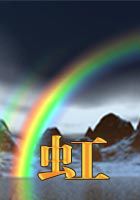Rio Negro.
S.Josef.
Port Desire, white pumiceous mudstone with Infusoria.
Port S.Julian.
Santa Cruz, basaltic lava of.
P.Gallegos.
Eastern Tierra del Fuego; leaves of extinct beech-trees.
Summary on the Patagonian tertiary formations.
Tertiary formations of the Western Coast.
Chonos and Chiloe groups, volcanic rocks of.
Concepcion.
Navidad.
Coquimbo.
Summary.
Age of the tertiary formations.
Lines of elevation.
Silicified wood.
Comparative ranges of the extinct and living mollusca on the West Coast of S.America.
Climate of the tertiary period.
On the causes of the absence of recent conchiferous deposits on the coast of S.America.
On the contemporaneous deposition and preservation of sedimentary formations.
RIO NEGRO.
I can add little to the details given by M.d'Orbigny on the sandstone formation of this district.("Voyage" Part Geolog.pages 57-65.) The cliffs to the south of the river are about two hundred feet in height, and are composed of sandstone of various tints and degrees of hardness.One layer, which thinned out at both ends, consisted of earthy matter, of a pale reddish colour, with some gypsum, and very like (I speak after comparison of the specimens brought home) Pampean mud: above this was a layer of compact marly rock with dendritic manganese.Many blocks of a conglomerate of pumice-pebbles embedded in hard sandstone were strewed at the foot of the cliff, and had evidently fallen from above.A few miles N.E.of the town, I found, low down in the sandstone, a bed, a few inches in thickness, of a white, friable, harsh-feeling sediment, which adheres to the tongue, is of easy fusibility, and of little specific gravity; examined under the microscope, it is seen to be pumiceous tuff, formed of broken transparent crystals.In the cliffs south of the river, there is, also, a thin layer of nearly similar nature, but finer grained, and not so white; it might easily have been mistaken for a calcareous tuff, but it contains no lime: this substance precisely resembles a most widely extended and thick formation in Southern Patagonia, hereafter to be described, and which is remarkable for being partially formed of infusoria.These beds, conjointly with the conglomerate of pumice, are interesting, as showing the nature of the volcanic action in the Cordillera during this old tertiary period.
In a bed at the base of the southern cliffs, M.d'Orbigny found two extinct fresh-water shells, namely, a Unio and Chilina.This bed rested on one with bones of an extinct rodent, namely, the Megamys Patagoniensis; and this again on another with extinct marine shells.The species found by M.
d'Orbigny in different parts of this formation consist of:--1.Ostrea Patagonica, d'Orbigny, "Voyage, Pal." (also at St.Fe, and whole coast of Patagonia).
2.Ostrea Ferrarisi, d'Orbigny, "Voyage, Pal."3.Ostrea Alvarezii, d'Orbigny, "Voyage, Pal." (also at St.Fe, and S.
Josef).
4.Pecten Patagoniensis, d'Orbigny, "Voyage, Pal."5.Venus Munsterii, d'Orbigny, "Voyage, Pal." (also at St.Fe).
6.Arca Bonplandiana, d'Orbigny, "Voyage, Pal." (also at St.Fe).
According to M.d'Orbigny, the sandstone extends westward along the coast as far as Port S.Antonio, and up the R.Negro far into the interior:
northward I traced it to the southern side of the Rio Colorado, where it forms a low denuded plain.This formation, though contemporaneous with that of the rest of Patagonia, is quite different in mineralogical composition, being connected with it only by the one thin white layer: this difference may be reasonably attributed to the sediment brought down in ancient times by the Rio Negro; by which agency, also, we can understand the presence of the fresh-water shells, and of the bones of land animals.Judging from the identity of four of the above shells, this formation is contemporaneous (as remarked by M.d'Orbigny) with that under the Pampean deposit in Entre Rios and in Banda Oriental.The gravel capping the sandstone plain, with its calcareous cement and nodules of gypsum, is probably, from the reasons given in the First Chapter, contemporaneous with the uppermost beds of the Pampean formation on the upper plain north of the Colorado.
SAN JOSEF.
My examination here was very short: the cliffs are about a hundred feet high; the lower third consists of yellowish-brown, soft, slightly calcareous, muddy sandstone, parts of which when struck emit a fetid smell.
In this bed the great Ostraea Patagonica, often marked with dendritic manganese and small coral-lines, were extraordinarily numerous.I found here the following shells:--1.Ostrea Patagonica, d'Orbigny, "Voyage, Pal." (also at St.Fe and whole coast of Patagonia).
2.Ostrea Alvarezii, d'Orbigny, "Voyage, Pal." (also at St.Fe and R.
Negro).
3.Pecten Paranensis, d'Orbigny, "Voyage, Pal." (also at St.Fe, S.Julian, and Port Desire).
4.Pecten Darwinianus, d'Orbigny, "Voyage, Pal." (also at St.Fe).
5.Pecten actinodes, G.B.Sowerby.
6.Terebratula Patagonica, G.B.Sowerby (also S.Julian).
7.Casts of a Turritella.
The four first of these species occur at St.Fe in Entre Rios, and the two first in the sandstone of the Rio Negro.Above this fossiliferous mass, there is a stratum of very fine-grained, pale brown mudstone, including numerous laminae of selenite.All the strata appear horizontal, but when followed by the eye for a long distance, they are seen to have a small easterly dip.On the surface we have the porphyritic gravel, and on it sand with recent shells.
NUEVO GULF.















